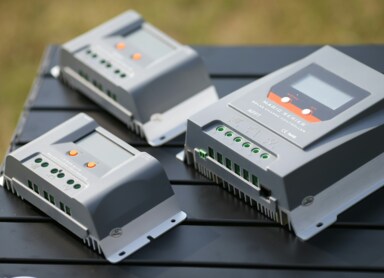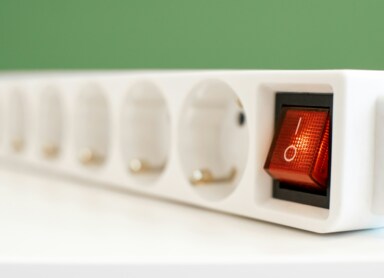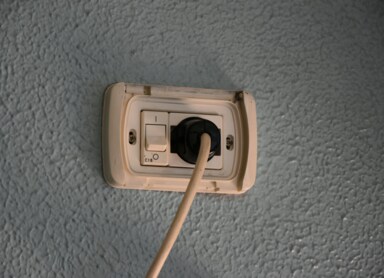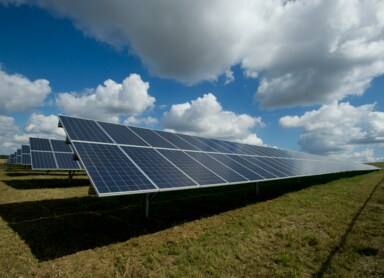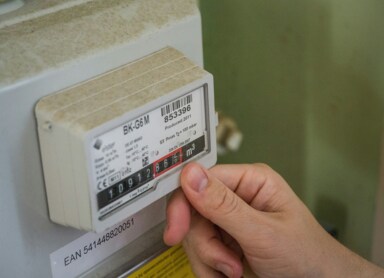How does a smart energy grid work?
Key Information The power grid, developed at the end of the 19th century, had one primary goal: to generate enough electricity to meet the needs of end users—businesses and households. However, as demand for electricity increases, traditional centralized supply systems are proving insufficient. What is the concept behind a smart energy grid, and can your company become part of it?
Smart energy grid – what is it and how does it work?
Before defining a smart energy grid (smart grid), let's first imagine two systems for delivering electricity: the classic centralized system and the modern decentralized system. What entities are present in both models?
Centralized energy grid model
The centralized system consists of a few large (and often state-owned) energy suppliers who produce electricity and deliver it to all consumers, but only within a given country. These producers can be coal, nuclear, hydro, or wind power plants. Electricity is transmitted via large national power lines, and consumers play only a passive role—they consume electricity and receive bills based on their usage, selected tariffs, and the conditions of their agreement with the power provider.
Does this sound familiar? Of course, because until recently, this was how the Polish—and not just Polish—electric grid functioned. In fact, it can be said that all countries are moving away from this model and heading towards the opposite end of the spectrum in terms of electricity production and transmission technology.
Decentralized energy grid model
On the other side of the spectrum lies the smart grid, the complete opposite of the centralized system. The key difference is that, instead of a few large electricity suppliers, the market features many entities fulfilling this role. Alongside large power plants, there are private solar farms, wind farms, and even offshore power plants.
Electricity is transmitted via international networks, as entities from different countries can collaborate, for example, by entering into long-term power supply agreements (Power Purchase Agreements, PPAs), or using power exchanges to make short-term spot purchases on the intraday or day-ahead markets.
Within a country, electricity transfers are conducted via many small networks, reducing the burden on the national grid. Finally, consumers not only consume electricity but can actively participate in the entire process by producing electricity using photovoltaics and storing it in energy storage systems. Sometimes this participation takes the form of energy clusters—grassroots initiatives aimed at enhancing the energy security of a given region.
So, what is a smart energy grid? It can be defined as a two-way exchange of electricity that involves multiple entities on the market, aimed at securing users' energy needs as dynamically and efficiently as possible.
Smart energy grids – benefits and challenges
The benefits of implementing a smart energy grid are difficult to overestimate. Everyone gains from it—individual market participants, distribution system operators, and even the state. What exactly are the gains?
- More efficient electricity transfer;
- Reduced recovery time of the system after a failure;
- Lower costs of purchasing electricity from suppliers due to reduced operational and infrastructure management costs;
- Reduced peak demand on the grid;
- Easier integration and fuller utilization of large-scale renewable energy sources (e.g., solar farms);
- Better integration of household electricity generation systems with the central grid;
- Enhanced energy security.
Today, energy security is crucial for all of us because a blackout would trigger a domino effect, impacting transportation, banking, financial services, and IT infrastructure.
Why is the transition from a centralized model to a smart grid taking so long? Apart from technological limitations and the need to develop solutions for efficient energy transfer, unified legislative frameworks must be established. This involves not only national regulations, such as those allowing prosumers to sell electricity they generate (as seen in net billing), but also international ones. Increasingly, energy transfers are crossing borders, necessitating appropriate contractual and ethical standards to prevent market competition violations.
Applying smart grids in practice. What are the components of a smart energy grid?
A smart grid can consist of many different elements. The simplest solution, found in residential photovoltaic systems, is smart meters. These devices track not only the amount of electricity consumed but also the electricity fed back into the grid. They warn users about energy wastage and help optimize consumption.
Another system component is smart switchboards, which control the actual distribution of electricity, stop distribution at the appropriate moment, and ensure that each participant receives exactly the amount of electricity they need.
Finally, smart grids include breakthrough IT solutions that automate the entire system. These involve analytics based on machine learning. They often use ARIMA models—autoregressive parameters and moving averages—to forecast electricity demand and identify potential issues, such as a cyberattack. Implementing such advanced analytics requires Non-Intrusive Load Monitoring (NILM) to discreetly track consumption. Naturally, processing such vast amounts of data quickly requires Big Data technologies.
As an interesting fact, electric cars are often considered part of the smart grid. Why? The electricity stored in their batteries increases self-consumption and enables efficient electricity storage.
Smart grids in Poland – current status and prospects
Investments in smart grids are one of the dominant directions in energy development, including in Poland. A domestic initiative in this regard is the Operational Programme Infrastructure and Environment, co-financed between 2014 and 2020 by the EU budget. Within this framework, eight functionalities were implemented, nearly four million users were connected to the smart grid, and primary energy consumption was reduced by 1,054.11 GJ/year, saving 97.6 MWh/year.
In May of this year, Poland's Ministry of Climate and Environment also signed agreements to co-finance smart grid investments in eastern Poland. These are not the only projects being implemented in the country, but they illustrate the direction of change. And these changes are certainly for the better.
Today, your company can also become part of the smart energy grid, for example, by producing and selling renewable energy. This way, you not only ensure the energy security of your business but also contribute to strengthening the entire national system. Contact us to learn more!

